
The taxonomy of contemporary classical music—new music, contemporary music, whatever you want to call it—is a thorny issue. But every month, we’ll take a look at some of the best composer-driven music to surface here on Bandcamp, that which makes room for electronic experimentation, improvisation, and powerful takes on old classics.
Cassandra Miller
Traveler Song/Thanksong



Vinyl

It’s hard for me to think of anyone making music as distinctive as Cassandra Miller, a Canadian composer living in London. Her work is bracingly fresh while maintaining a strong connection to tradition, and these two works use source material from the past that would merely be impressively clever if the results weren’t so astonishing. “Traveler Song” employs a practice she’s developed over time, where she listens to a piece of folkloric music—in this case, a recording of a Sicilian cart driver (il carrettiere) made by Alan Lomax and Diego Carpitella—on headphones, with the volume loud enough that she couldn’t hear her own improvised vocal response, which she then tapes. Miller repeated the process several times, her wobbly, wordless singing spinning off into something otherworldly, yet rooted in the quotidian. She then wrote a gorgeous arrangement for London’s Plus-Minus Ensemble to play alongside the recording of her own voice—first with solo piano, carefully limning her singing, before the rest of the acoustic ensemble enters with airy, delicate counterpoint appearing in various combinations around an evolving guitar figure. The piece first appeared on a fantastic album called Songs About Singing released in 2019 and four years and many spins later it’s lost none of its magic or beauty. “Thanksong” is derived from the third movement of Beethoven’s late quartet in A minor (op. 132), using similar methods, with Miller recording improvised singing to each of the four string parts, which the members of Montréal’s masterful Quatuor Bozzini then play by ear to those lines which they hear on headphones. The remarkable singer Juliet Fraser then sings melodies from the quartet “as slowly and quietly as possible,” her peerless soprano overlapping with some of Miller’s original responses. The connections to the source material are ineffable and real, but they serve something powerfully new.
andPlay
Translucent Harmonies

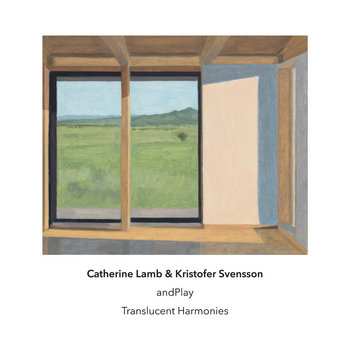

Compact Disc (CD)

Violinist Maya Bennardo and violist Hannah Levinson have worked together as andPlay for more than a decade, and on this riveting new album, there’s no missing how locked in they’ve become, exploring pieces where sound itself is often the primary focus. The album opens with a new reading of Catherine Lamb’s “Prisma Interius VIII,” which was originally composed for a larger ensemble, with three strings and a tenor recorder complemented by a pair of “secondary rainbow synthesizers,” an interface designed by the composer and Bryan Eubanks that filters live outdoor audio into a sort of Aeolian harp, blending with the harmonies of the acoustic instruments, and recorded by the collective Lamb is part of, Harmonic Space Orchestra. This new version isolates the two lead instruments, affording us the chance to zoom in on those voices and revel in what they produce together. Bennardo and Levinson have been playing this duo version since 2018, and their commitment pays off, producing stunning harmonies that cause the piece to seemingly levitate through its shifting intervals. The bulk of the album is occupied by Vid stenmuren blir tanken blomma by Swedish composer Kristofer Svensson, which was commissioned to be part of this specific program, also written in just intonation. With silence as a foundation, over the course of 40 exquisite minutes, the composer presents a series of gestures and abstractions, some involving a breath-like unpitched white noise, others imparting terse episodes of Baroque melody, to deliver a meditation marked by surprise and patience thanks to the complete commitment by the players.
Samuel Adams
Current
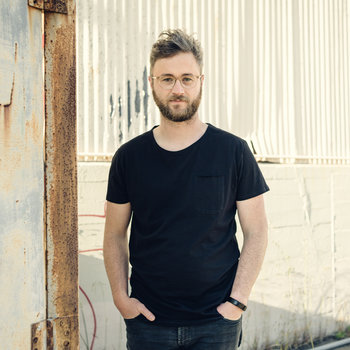


Compact Disc (CD)

This superb portrait album from composer Samuel Adams captures his ability to shade and collide acoustic music rooted in the classical tradition with subtle electronic flourishes that transform his writing in mysterious ways. The collection opens with Violin Diptych, a piece he wrote during the pandemic for his own edification—a rare occurrence when so much work in contemporary music is created through the commissioning process. Beautifully performed by violinist Karen Gomyo—with pianist Conor Hanick joining for the second movement—the composer starts out with traditional-sounding melodies that bend and twist phrases, suggesting Bach-like cadences. They are interrupted by thoroughly contemporary single-string passages, with gentle electronic swells surfacing as it moves towards the second part, where piano takes over the shadowing role. Hanick’s volume and activity increases as the movement opens up. The divide between acoustic and electric sources is hazier on the title composition, one of the last recordings to feature Chicago’s sadly defunct Spektral Quartet. The five-moment gem evolved from a single 12-minute “study” written in 2016, and it proves worth the extra time, with a majestic toggling between shimmering, trance-inducing stasis and roaring chords. The ensemble is surrounded either by four snare drums triggered by transducers to impart a variable glow of gentle pink noise or a gliding electronic drone, but the meticulous strings do the heavy lifting on this gorgeous marvel. The album concludes with the beautifully spare solo piano piece “Shade Studies,” played by Hanick but commissioned by Sarah Cahill for a program honoring Terry Riley, with its elegant, elliptic phrases letting overtones dissolve within faint electronic puddles.
Austin Wulliman
The News From Utopia

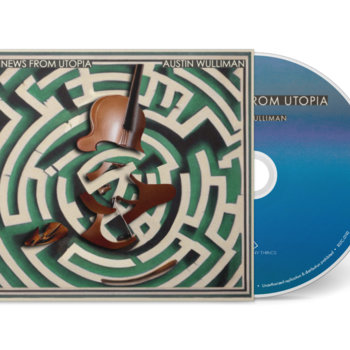

Compact Disc (CD)

Violinist Austin Wulliman has always been a voracious listener, digging into new sounds from within and well outside classical music, perpetually exploring new possibilities. In his Chicago days, he was a crucial presence in groups like Spektral Quartet and Ensemble Dal Niente. In 2016 he relocated to New York where he joined the mighty JACK Quartet, arguably the most sophisticated new music string quartet in the U.S. The members of the quartet have long immersed themselves in music that embraces different tuning systems and experiments with harmony, and that particular element eventually led Wulliman to create his own music, developing an extended work thick with overdubbed parts that sparkle, vibrate, and sizzle with strange, often biting harmonies. The violinist played everything, although JACK cellist Jay Campbell pitched in on two of the six sections. Wulliman had a clear narrative in mind as the music comes together, with the final part inspired by the Zadie Smith short story “The Lazy River,” and many of the ideas explored in The News From Utopia were derived from a single sentence early in the story, such as “heartbeat” and “dry air.” In the violinist’s imagination, these notions translate into wild polyrhythms and bracing counterpoint deployed within mind-warping layers, some of which are extended, chopped, and stuck using digital manipulation. While the dystopian fanfares that cut through the din on “The Fool’s Heralds” sound a tad corny in context, they nevertheless spell out a harrowing vision that resonates with the way political showmanship and power struggles seem to ignore the collapse of our planet. Still, even without any narrative context this music crackles with vitality, delivering an almost psychedelic experience that celebrates how trippy harmony can be.
Les Certitudes
Construire sur les ruines d’un passé encore fumant

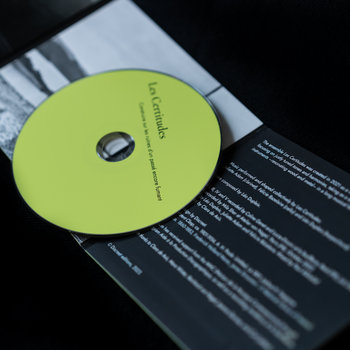




Compact Disc (CD)




Composer and keyboardist Léo Dupleix works at the intersection of composed and improvised music, frequently exploring unusual tuning systems and creating music that blurs genres and eras. This new trio—with Dupleix on harpsichord along with cellist Félicie Bazelaire and clarinetist Juliette Adam—tackles a beguiling set of his compositions, with harmonies that evoke some radically different signposts, whether Arnold Dreyblatt’s Orchestra of Excited Strings or cycling minimalism á la Terry Riley. The three musicians constantly shift timbres, with one of them often dropping out for extended spells, and the five-movement work alters pace just as much, giving the performance an almost psychedelic sense of dislocation. Bazelaire and Adam are phenomenal together, their braided long tones producing halos of exquisite overtones, while Dupleix’s harpsichord work allows the music to connect with Baroque traditions as well as contemporary drone, usually in some peculiar admixture where no one concept prevails. The graceful melodies soothe and soar, the interplay is rigorous yet airy, and the harmonies tingle, all perpetually unveiling new blends, rhythms, and melodies. Somehow the music feels warmly familiar and totally otherworldly at once, and it’s hard to imagine a better way to praise this work.
John Luther Adams
Darkness and Scattered Light
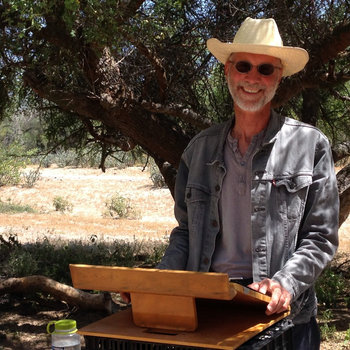


Compact Disc (CD)

The music of John Luther Adams inspires a certain devotion from a core group of collaborators—whether JACK Quartet, percussionist Doug Perkins, or conductor Ludvic Morlot—and this astonishing new collection revels in his connection with double bassist Robert Black, the long-time member of Bang on a Can All-Stars, who died from colon cancer several months after finishing this album. His playing reveals the extraordinary possibilities of his instrument, deftly translating the composer’s sonic evocations of nature with stunning precision and sensitivity. The album opens with the 2007 piece “Three High Places,” a tender three-movement work originally written for violin, but tackled by a variety of string players over the years. The piece eschews any stopped tones—where the instrumentalist presses a string against the fretboard—in favor of harmonics and open strings, but its mournful melodies and ghostly overtones, which occasionally defy logic in the elucidation of self-contained counterpoint, lacks nothing. The title piece is the newest work here, and it features Black playing five overdubbed lines conveying both haunting darkness and shimmering brightness, as long slow-moving arcs of sound coalesce and separate over 16 luxurious minutes, evoking the shift in natural light between noon and midnight in an imaginary location conjured by the composer. The album concludes with a kind of low-end rejoinder to the opening piece: “Three Nocturnes” is rooted entirely in the subharmonic series, and it is dedicated to Black—a fitting, moving epitaph.
Catherine Christer Hennix
Solo for Tamburium
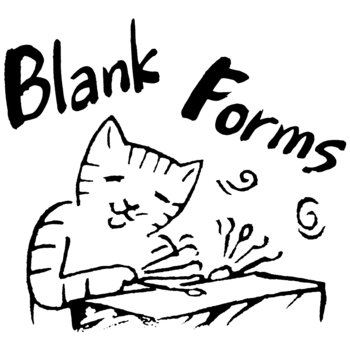

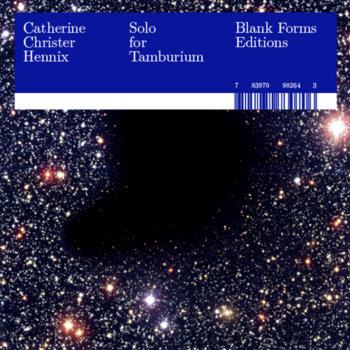

2 x Vinyl LP, Compact Disc (CD)


The Swedish composer, mathematician, and philosopher Catherine Christer Hennix—who has lived in Istanbul, Turkey for the last few years—has spent a lifetime pursuing cosmic sounds, starting with the jazz she grew up hearing in Stockholm in the 1960s and evolving in New York where she worked with La Monte Young and the dhrupad master Pandit Pran Nath. Very little of her work has been preserved over the decades, and it’s only over the last decade or so that labels like Important and especially Blank Forms have offered a corrective. This dazzling new album was recorded in Berlin in 2017, an early, long-duration exploration of a software interface Hennix developed that fosters a kaleidoscopic churn of sustained tamboura-like drones—a sonic bedrock of her work dating back to the mid-1970s when she experimented with an electric harpsichord, while even more recently, Hennix has been using the Japanese free reed instrument called the shō—that collide and glide with a constantly evolving sparkle of harmonic-rich psychedelia. Clusters of closely aligned intervals unspool in an unrelenting sea of transcendental sound, a cycling, glowing mass of psychoacoustic wonder in which immersion can erase any sense of time.
Jürg Frey
Circular music (Ext.n°1-n°2-Ext.n°2)


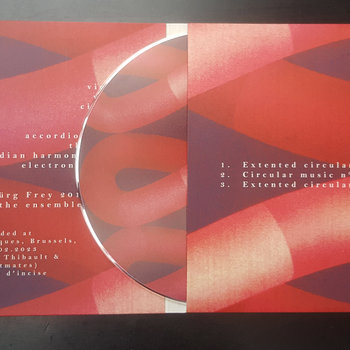
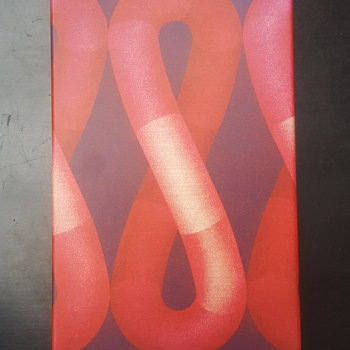

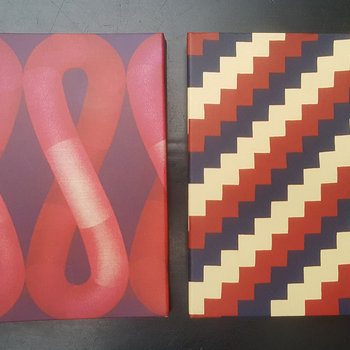
Compact Disc (CD), Cassette,




This unnamed French ensemble—an octet of adventurous musicians including vocalist Yannick Guédon, violinist Clara Lévy, and multi-instrumentalist d’incise , who runs the label INSUB—has adapted three compositions by Jürg Frey for itself, proving how strong ideas can be translated countless ways. These three pieces were originally scored for either solo piano or a piano quartet, but with the composer’s blessing, they’ve reimagined them. The opening piece, “Extended Circular Music Nº 1” probably clings closer to Frey’s original intention, with a series of beautifully descending scores drifting downward like leaves falling to earth, but never in a direct route. As the music unfolds, delicate, meditative melodies take root, each utterance a calmly sustained tone shaped by players deeply in tune with one another; it’s as gorgeous as anything I’ve heard all year. The arrangements of “Circular Music Nº 2” is more experimental, unfolding over a leisurely 34 minutes in hushed tones—whistling breaths, harmonic feather strokes, unfurling static—the mewl, coast, and gurgle with impressive control and restraint while nonetheless building to something ineffable, with a clear tonality and melody emerging slowly on strings. “Extended Circular Music Nº 2” serves as a simpatico bookend, its more hopeful tunefulness providing a kind of inverse structure to the opener, with thicker chords—bolstered by the accordion of Stan Maris, who’s absent on the first piece—and a more extroverted force.
Catherine Lamb
parallaxis forma

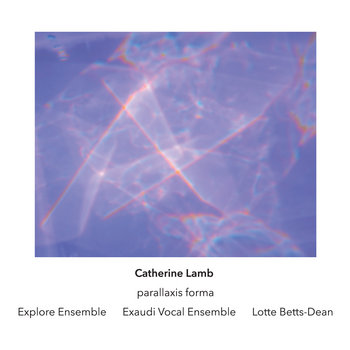

Compact Disc (CD)

One of the most encouraging things to observe while writing this column over the years is seeing how certain new works are embraced, creating a new canon of contemporary music. Regular readers have surely noticed my deep admiration for Catherine Lamb’s music—which also appears on the andPlay album covered above—so it’s fantastic to see how more musicians are taking on her work, not just the ones who’ve commissioned it. This collection focuses on some of her pieces for voice, tackled by some of England’s most adventurous and committed musicians. Both “Color Residua” and the title piece were composed around the same time and explore the way sounds morph as the shape of the mouth changes to produce different vowels. On the first piece a string quartet drawn from members of Explore Ensemble form a harmonically rich foundation for the braided voices of Juliet Fraser, Cathy Bell, and Michael Hickman (all members of the vocal group Exaudi), producing a riveting stream of constantly changing long tones that at once recalls some imaginary liturgical tradition and evokes the heavens. Lamb herself has described this as “after-image studies, where three fused voices produce lingering shadows carried over by four string instrumentalists.” “Pulse/Shade” is written for two vocal duos, but here Lotte Betts-Dean overdubs all four wordless parts, which play out in four sections with steady alteration in attack, consonance, and tension of vowel sounds. The singer is also the focus of title work, in which the members of Explore extract “the tonalities from the phonetic timbres.” It’s an extraordinary collection, and it gives me hope that more folks will encounter Lamb’s music.
Annea Lockwood
Glass World


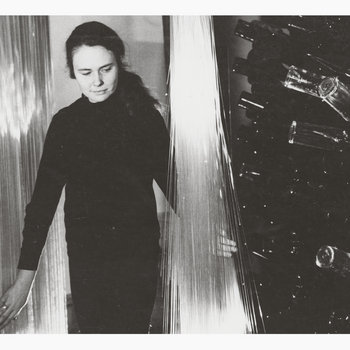

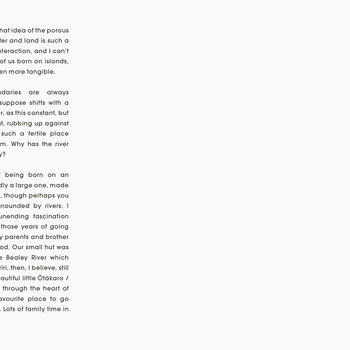


Compact Disc (CD)




Over a career spanning some five decades Annea Lockwood has consistently evoked a sense of wonder about sound and the world that produces it. Even at her most radical, there’s long been an enthusiastic curiosity and generosity to her work, whether it’s creating new possibilities for non-functioning pianos in her Piano Transplants series or mapping the sounds and stories of the Danube and Hudson Rivers. There’s great BBC footage of her gleefully smashing glass in the mid-‘60s—taken with the visceral sounds rather than exalting in destruction—but this recording opts for something more subtle and multivalent. Glass World was originally released in 1970, and its 23 succinct pieces function as a study of different types and shapes of glass objects. As she said when the recording was first released, “I have become fascinated by the complexity of the single sound.” These aren’t compositions as such, but whether she’s shaking sheets of glass, rubbing the lip of glasses filled with different amounts of water, or generating bending tones with a struck water gong, Lockwood produces an incredible range of color and texture, digging into the simplest techniques to articulate a veritable symphony of variation, from liquid swells to gently metallic tinkling. While Lockwood has gone to create much more complex, multi-layered projects, the pure enchantment with sound on Glass World has remained at the core of her music.







